Founder of sculpted glass painting trade in Vietnam
Over the past 35 years, meritorious artisan Pham Hong Vinh, born in 1961 in Son Tay township, Hanoi, has tirelessly created glass artworks. He is the owner of the exclusive patent on the process of producing glass paintings in Vietnam granted by the Department of Intellectual Property under the Ministry of Science and Technology in 2012; is the author of the first glass painting that met OCOP standards in 2020; and was the gold medalist at the 25th International Invention Competition in Russia in 2023.
    |
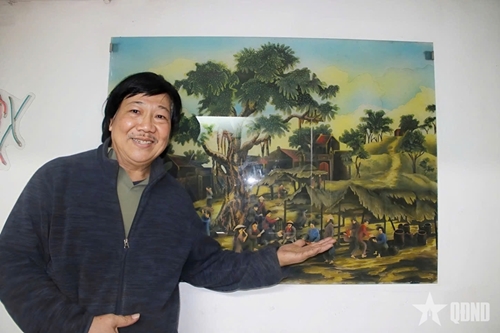 |
|
Meritorious artisan Pham Hong Vinh and his artwork |
“Since I was a child, I have loved painting and sculpture, so people often asked me to draw and engrave pictures. In 1988, one of my friends asked for patterns engraving on a crystal cup. Having never tried engraving on glass before, I was interested in exploring and experimenting. One month later, I created a glass grinding stone and successfully engraved on the cup,” Vinh proudly said.
He continued researching to create first glass grinding machines in Vietnam and step-by-step completed the grass painting line, laying a foundation for later glass artworks. In 1994, Vinh Coba brand was debuted, providing decorative relief-patterned mirrors and frosted glass for the construction industry.
    |
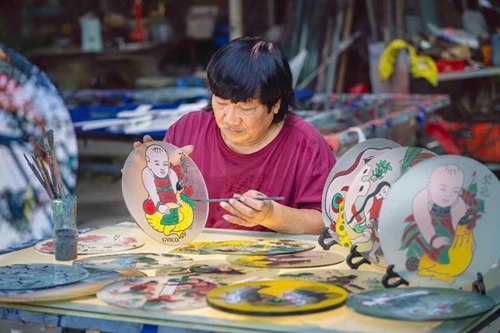 |
|
“Engaged in the glass industry, I understand that failure is normal. But if you overcome it, the results will be extremely worthy,” Vinh says. |
    |
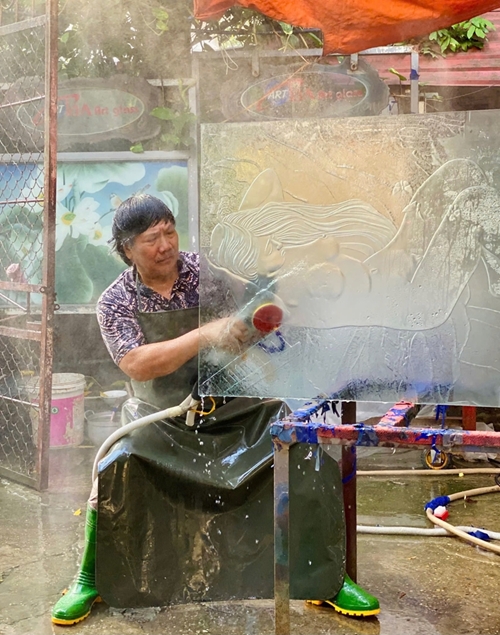 |
|
With sculpture techniques, artisan Pham Hong Vinh has created various unique glass artworks, distinguishing himself from others |
After nine years of diligent research and creativity, the making of the 1.2-meter glass painting marked an important turning point in his journey of pursuing the art of glass paintings. His business was named Coba Art Glass Joint-stock Company.
Vinh’s glass paintings are impressive thanks to not only their durability and sophisticated techniques but also the depth of Vietnamese traditional culture. Vinh said that each of his complete artwork has to undergo eight stages and each touch on the surface of the glass panels means blowing soul into the work.
Developing sculpted glass artworks of Vietnam
Tirelessly creating, crying, and improving technologies, artisan Pham Hong Vinh has always exerted efforts to preserve and spread the glass painting profession.
    |
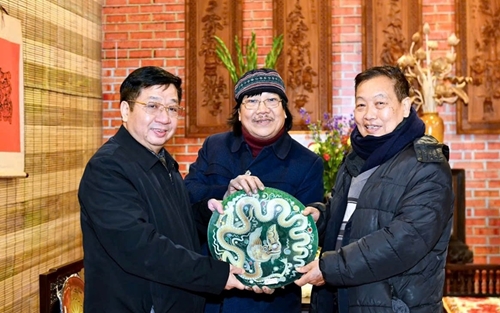 |
|
Meritorious artisan Pham Hong Vinh (center) and the work “Dragon in the Ly Dynasty” |
He has trained more than 200 students. Some have become renowned artisans of Hanoi, such as artisans Bui Bach Dang, Pham Hong Hanh, and Bui Thanh Hai.
Artisan Bui Thi Hai Ha, born in 1986, are among Vinh’s top students. She was the youngest artisan among 100 artisans recognized by the Vietnam Craft Villages’ Association in 2014. She shared that “thanks to Vinh’s guidance and dedicated instruction, I have been able to pursue and have a close bond with glass painting until today. In early days of my puzzlement, he was the one who taught me not only the techniques but also the passion and perseverance for the profession.”
    |
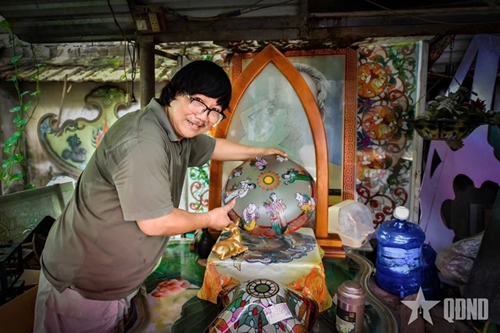 |
|
A lampshade decorated with patterns imbued with Vietnam’s folk culture |
Together with young artisans’ efforts, Vinh is intending to bring glass paintings closer to the public via exchanges and exhibitions. His dream is to make Vietnam’s glass paintings reach international markets.
* In the world, stained glass paintings have been for a long time, but simply being created by assembling pieces of colored glass, often used to decorate churches. In Vietnam, this type of art began in the Nguyen Dynasty with paintings on glass, developed more in the early 20th century but gradually faded away, paving the way for color printings and printing on glass.
Different from traditional stained glass paintings, Vinh's sculpted glass paintings are not simply painted in color but also combine the technique of sculpting to create relief blocks, coloring with ceramic enamel and applying glass surface treatment technology. As a result, sculpted glass paintings have high durability, non-fading colors, diverse designs, suitable for many architectural works.
Translated by Mai Huong